Safety of Chiropractic Adjustments
Chiropractic is a health care that deals with the relationship between your body and how it is affected by your environment, lifestyle, and genetics. Chiropractors work to correct structural imbalances in the body, which they believe often leads to pain and illness.
You can see a chiropractor for many reasons. However, when most people think of chiropractic care, they think about getting an adjustment. This is when a chiropractor uses their hands to either push or pull on various parts of the body to help increase the range of motion and reduce pain.
Are chiropractic adjustments safe for me? Some people may be nervous about visiting a chiropractor for the first time because they are worried that the adjustments may not be safe for them. While receiving an adjustment might sound scary to some, it’s very gentle and you won’t experience any pain unless your chiropractor presses on a spot that is sensitive or has an injury.
If you’re interested in learning more about chiropractic care or are thinking about getting an adjustment for the first time, there are a few things that you may want to consider. After reading more about this topic, there are benefits as well as risks associated with receiving chiropractic care.
The Chiropractic Adjustment Procedure
The adjustment procedure is straightforward. When you visit your chiropractor’s office, they will have you take off your shirt, sit on the table and relax while they perform the procedure.
Your chiropractor will then place one or both of their hands on the area that needs adjusting and gently push or pull your body into the proper position. You may hear a popping sound, which is perfectly normal.
How Much Does It Hurt?
When you receive an adjustment, there’s no reason why it should hurt at all. Some people who are new to chiropractic care find that they may be sore after their first few visits, but this is normal. Your body needs time to adjust and you shouldn’t experience any additional pain.
Common Conditions That Can Be Treated
Chiropractic care can help treat many different conditions, including lower back pain, neck pain, shoulder or arm pain, headaches, migraines, and other types of body pains.
If you’ve been to a doctor for your condition and they found nothing wrong with you, chiropractic care may be a great option for helping to ease some of your discomforts.
The Benefits Outweigh Risks
When it comes to chiropractic care, the benefits outweigh any risks. Your chiropractor will not perform any type of adjustment without your consent. While you may feel vibrating or slight pressure when they adjust your body, that is normal.
However, if you experience any severe pain during an adjustment or have significant discomfort after one, it’s important to contact a chiropractor right away.
Chiropractic care is a treatment that focuses on the relationship between the spine and the nervous system. Through examination, chiropractors can diagnose spinal misalignments that affect nerve function throughout the body.
Spinal problems may be caused by accidents, physical or emotional trauma, stress, or even inherited traits. Symptoms of nerve interference range from localized pain, tingling, or numbness, to physical symptoms in the entire body.
Many patients are unaware of their spinal condition until they begin feeling pain. This may be why chiropractic is so effective at relieving many types of pain associated with muscle spasms, headaches, and even some types of migraines.
Chiropractors Really Do Care
While you might be a little nervous about your first visit, a chiropractor will explain everything to you and help put your mind at ease. Visiting a chiropractor is a great way to get your body back on track and enjoy life without pain or discomfort. Misalignments of the spine can irritate the nerve system, causing pain.
A chiropractor works with a patient’s nervous system to find where it has been affected by misalignment or subluxation. This is why they are vital in relieving some types of pain and conditions.
Once these misalignments have been found, they are then able to correct the spinal problems using a variety of techniques. One of these techniques is an adjustment which uses a quick thrust applied at specific angles to stimulate the spine and re-establish proper movement and positioning.

Soft Tissue Therapy
Another technique used by chiropractors is called soft tissue therapy or massage. This method is used to stretch and relax the muscles surrounding the spine. This helps to reduce pain and increase the mobility of the spine.
Hot/Cold Therapy
After an adjustment or therapeutic massage, chiropractors may use heat therapy or cold therapy to ease muscle spasms and pain. Chiropractic care usually includes a combination of therapies such as spinal adjustments, soft tissue therapies, and exercises.
This comprehensive care is what allows chiropractic patients to live a more productive and pain-free life.
Patients who choose chiropractic care can look forward to:
- Fewer muscle aches and joint pains after an adjustment
- Reduced number of headaches or migraines
- Reduced number of sinus infections or sinus problems
- Fewer injuries due to falls or accidents
- Improved posture and balance when the spine is properly aligned
Condition: Back Pain Relief
Chiropractic care helps to keep the body in alignment which helps promote an overall sense of well-being and increase range of motion. When patients are experiencing back pain, chiropractic work may be able to help restore normal motion and alignment.
This may relieve the pressure on the nerves that are being impinged which helps reduce inflammation, muscle spasms, and pain associated with lower back problems.
Condition: Headaches Relief
Chiropractic treatments help relax muscles in the upper neck and back of the head. As these tight muscles are relaxed, blood flow is increased in the area which in turn helps reduce muscle spasms and pain.
Condition: Neck Pain Relief
Like lower back pain, neck problems can also be relieved through chiropractic care because these issues often go hand-in-hand. Chiropractic treatments get to the cause of the problem instead of just treating the symptoms and may help reduce inflammation, muscle spasms, and pain.
Condition: Migraine Relief
A migraine headache is characterized by intense throbbing or pulsing in one area of the head. Doctors are unsure what causes these headaches but they believe several factors can trigger them including stress, tension, chemicals in food, and hormones.

Condition: Sinus Relief
When the nasal passages are blocked by inflamed sinuses, patients can experience symptoms like headaches, a stuffy nose, and difficulty breathing. This pressure can be caused by allergies or an infection which can cause further problems if left untreated. Chiropractic work helps to ease inflamed muscles around the sinus areas which may help reduce inflammation, muscle spasms, and pain.
Condition: Arm or Leg Pain Relief
Pain in the arm or leg can be caused by trauma that has led to nerve impingement, but it can also be caused by other problems like pinched nerves, spinal misalignments, and inflamed muscles. Chiropractic care works to get to the cause of the problem and it may reduce inflammation, muscle spasms, and pain.
Risks With Chiropractic Care
Chiropractors should inform patients that although there is no evidence of direct harm from chiropractic manipulation of the cervical spine, a history of trauma or certain diseases may increase the risk associated with this treatment. Risks include aseptic necrosis and vertebral artery dissection leading to stroke.
Osteonecrosis
Since the goal is to create space between two vertebrae by placing pressure on or near the affected area of the spine, chiropractors may cause a lesion in bone (osteonecrosis) due to such practices as excessive manipulation. Also, it is possible to damage the vertebral artery, which could result in a stroke.
Transitory Headache
The most common adverse effect is a benign transitory headache after treatment, but more serious complications can occur. A small percentage of patients may be severely injured by chiropractic manipulation. Some chiropractors have set up their associations and speak against mainstream medicine. It is my opinion that these associations are for self-promotion and it does not serve to benefit patient care.
Vertebral Artery Dissection
In a study published in the journal Spine, researchers found that “chiropractic manipulation was associated with vertebral artery dissection”. A case-control study published in Neurology (the medical journal for the American Academy of Neurology) found that “Patients who consulted a chiropractor or osteopath for neck pain had a 2.7 to 3.6-fold greater risk of vertebral artery dissection than those who sought care from primary care physicians”.
Another study published in 2009 by the National Stroke Association, concluded that patients who have suffered a vertebral artery dissection, which can ultimately cause a stroke, often report neck pain or stiffness first, before the stroke itself. The study was authored by neurologist Daniel Labiner, MD, and funded by the National Institutes of Neurological Disorders and Stroke.
Cervical Spine Issues
There are also other serious risks associated with chiropractic treatment of the cervical spine. The American Association of Neurological Surgeons (AANS) convened a panel of experts to review the available scientific literature on cervical spine manipulation published between 2002-2012.
The consensus report, “The Appropriateness of Manipulation and Traction of the Cervical Spine”, states that current evidence does not support or refute the appropriateness of cervical spine manipulation for patients with neck pain, headache, or cervicogenic dizziness.
Cervical spine manipulation is associated with a small risk of benign and serious complications that can lead to permanent disability or death, according to the findings. The AANS concluded that practitioners should have evidence-based education before treating their patients with cervical spine manipulation.
A chiropractor can also make a cervical adjustment using an instrument called an activator; this small handheld spring-loaded tool helps doctors deliver quick thrusts with minimal effort. It seems like chiropractors are asking for trouble by using these instruments. Chiropractors who use them might as well undergo training to become certified chiropractic neurologists.
The bottom line is that there are significant risks associated with chiropractic manipulation of the neck, even when performed appropriately. Chiropractors who use this method are asking for trouble because these modern protocols have not been tested for safety.

In Conclusion
When patients don’t follow recommendations it is only because they simply do not know who to trust when looking for competent medical care. Unfortunately, many individuals don’t realize the consequences associated with chiropractic manipulation until it is too late. It is important to research the benefits, risks, type of chiropractor, and services they will perform on you.






